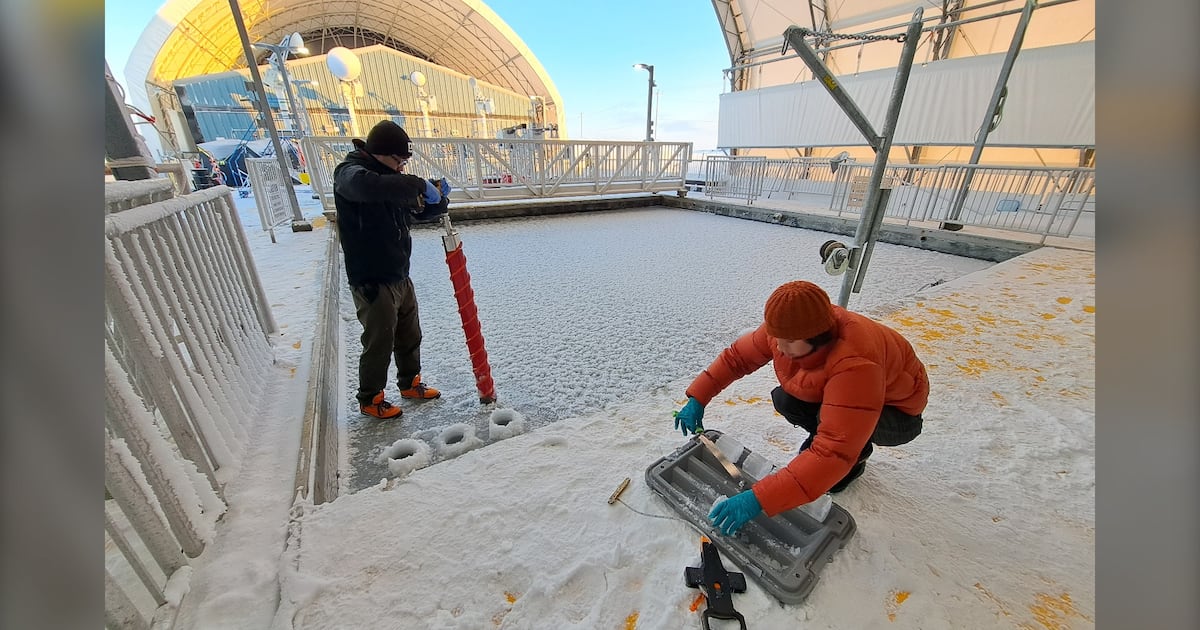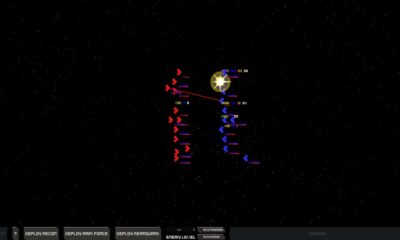Science
Manitoba’s Churchill Marine Observatory Marks One Year of Research

A multidisciplinary research facility dedicated to Arctic science in Churchill, Manitoba, is celebrating its first anniversary. The Churchill Marine Observatory (CMO), which officially opened on August 27, 2024, aims to address complex questions that have significant socioeconomic implications for the region. According to Dr. Feiyue Wang, the project lead and professor at the University of Manitoba’s Clayton H. Riddell Faculty of Environment, Earth, and Resources, the CMO’s establishment has “really put Manitoba on a map of marine research.”
The CMO, which represents an investment of approximately $45 million, is designed to facilitate a wide range of studies. This includes the ability to draw seawater from both the Hudson Bay and the mouth of the Churchill River. Wang explained that this unique setup enables researchers to conduct experimental studies, particularly as the environment surrounding Hudson Bay undergoes rapid changes. “We could actually test different scenarios and start to gain the knowledge to prepare the region,” he noted.
A significant aspect of the CMO is its focus on risk reduction and mitigation strategies, particularly concerning oil spills. Wang, whose background is in aquatic chemistry, highlighted the observatory’s capacity to investigate how natural microorganisms might degrade oil in ice-covered waters. Additionally, the facility is equipped to study how freshwater influences the marine ecosystem in Hudson Bay.
The CMO features advanced monitoring systems, including strings of sensors located at the bottom of the Churchill River and Hudson Bay. These sensors allow researchers to gather data on various physical and biological properties of the water. The observatory also operates a research vessel, the William Kennedy, which enhances mobility for sampling and monitoring activities.
While many projects are still in progress, Wang shared that the CMO supported three major research initiatives between November 2024 and February 2025. One of these projects investigated the early stages of thin ice formation, conducted in collaboration with researchers from Denmark. Another ongoing study is exploring the ability of microorganisms to break down oil in ice-covered waters, which is crucial for environmental management in the event of an oil spill.
Looking to the future, Wang expressed a strong desire for increased participation from Indigenous researchers and community members in the CMO’s research activities. He emphasized the importance of local involvement, stating that “folks who live there, who call that region home, are the ones who are going to be more invested in it.” The observatory has already incorporated some community involvement, but Wang aims to see this become a more prominent aspect of the CMO’s overall research direction.
As the CMO approaches its second year, it stands as a vital hub for Arctic research, poised to contribute significantly to our understanding of marine environments and the challenges they face.
-

 World3 months ago
World3 months agoScientists Unearth Ancient Antarctic Ice to Unlock Climate Secrets
-

 Entertainment3 months ago
Entertainment3 months agoTrump and McCormick to Announce $70 Billion Energy Investments
-

 Lifestyle3 months ago
Lifestyle3 months agoTransLink Launches Food Truck Program to Boost Revenue in Vancouver
-

 Science3 months ago
Science3 months agoFour Astronauts Return to Earth After International Space Station Mission
-

 Technology2 months ago
Technology2 months agoApple Notes Enhances Functionality with Markdown Support in macOS 26
-

 Top Stories1 week ago
Top Stories1 week agoUrgent Update: Fatal Crash on Highway 99 Claims Life of Pitt Meadows Man
-

 Sports3 months ago
Sports3 months agoSearch Underway for Missing Hunter Amid Hokkaido Bear Emergency
-

 Politics2 months ago
Politics2 months agoUkrainian Tennis Star Elina Svitolina Faces Death Threats Online
-

 Technology3 months ago
Technology3 months agoFrosthaven Launches Early Access on July 31, 2025
-

 Politics3 months ago
Politics3 months agoCarney Engages First Nations Leaders at Development Law Summit
-

 Entertainment3 months ago
Entertainment3 months agoCalgary Theatre Troupe Revives Magic at Winnipeg Fringe Festival
-

 Politics1 week ago
Politics1 week agoShutdown Reflects Democratic Struggles Amid Economic Concerns





















